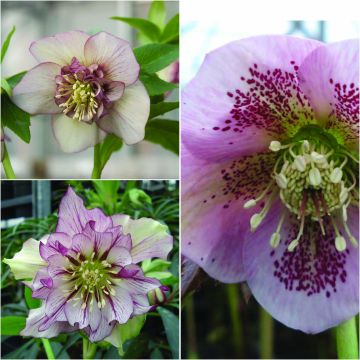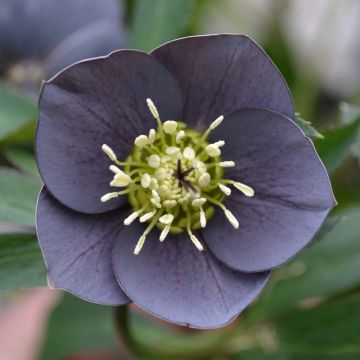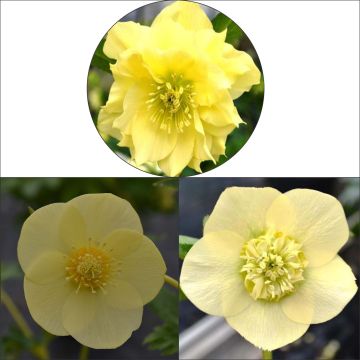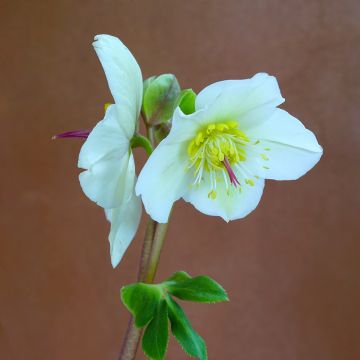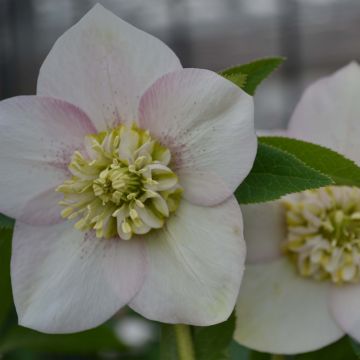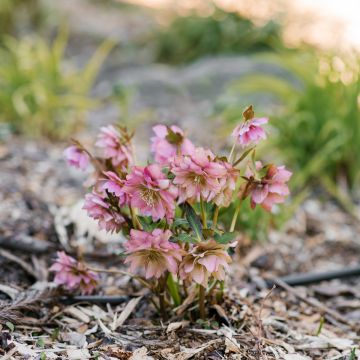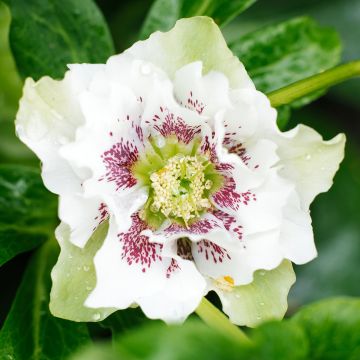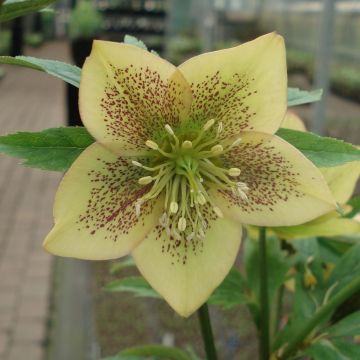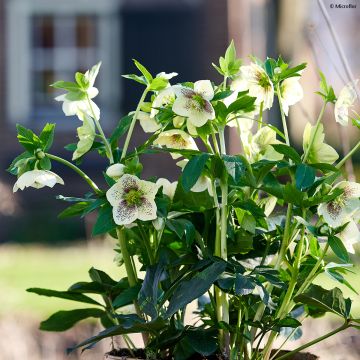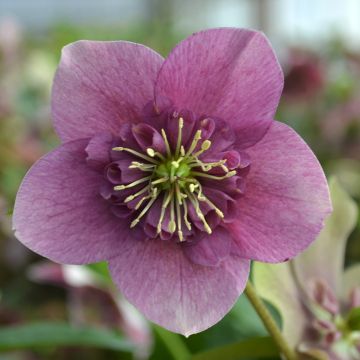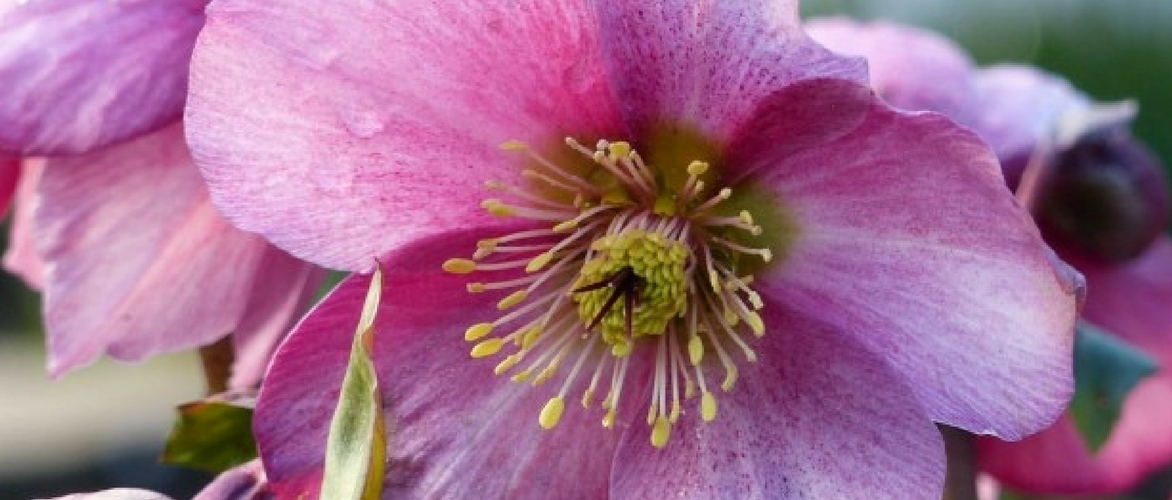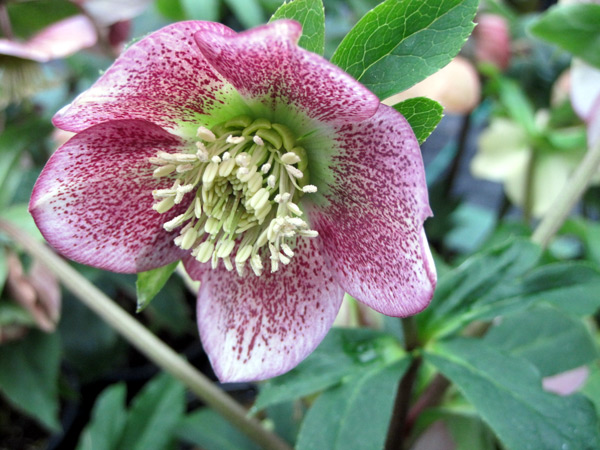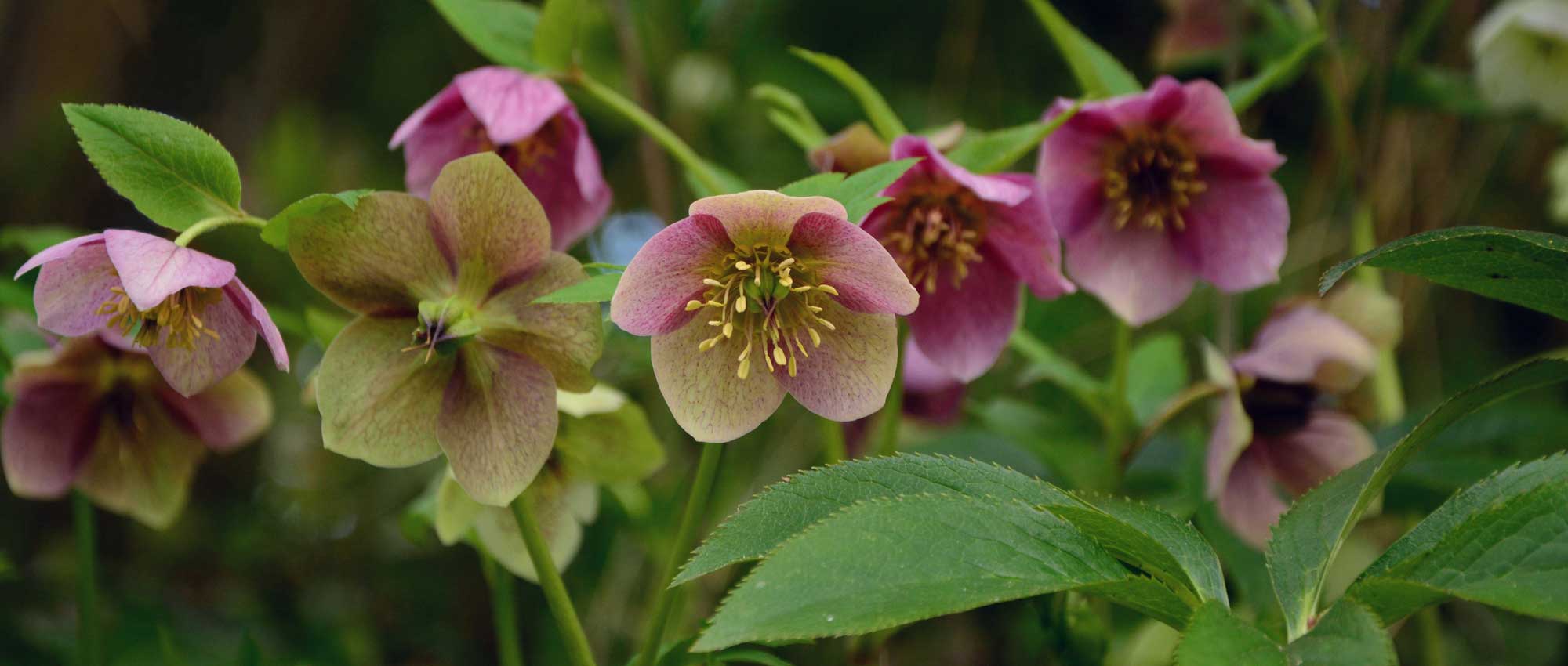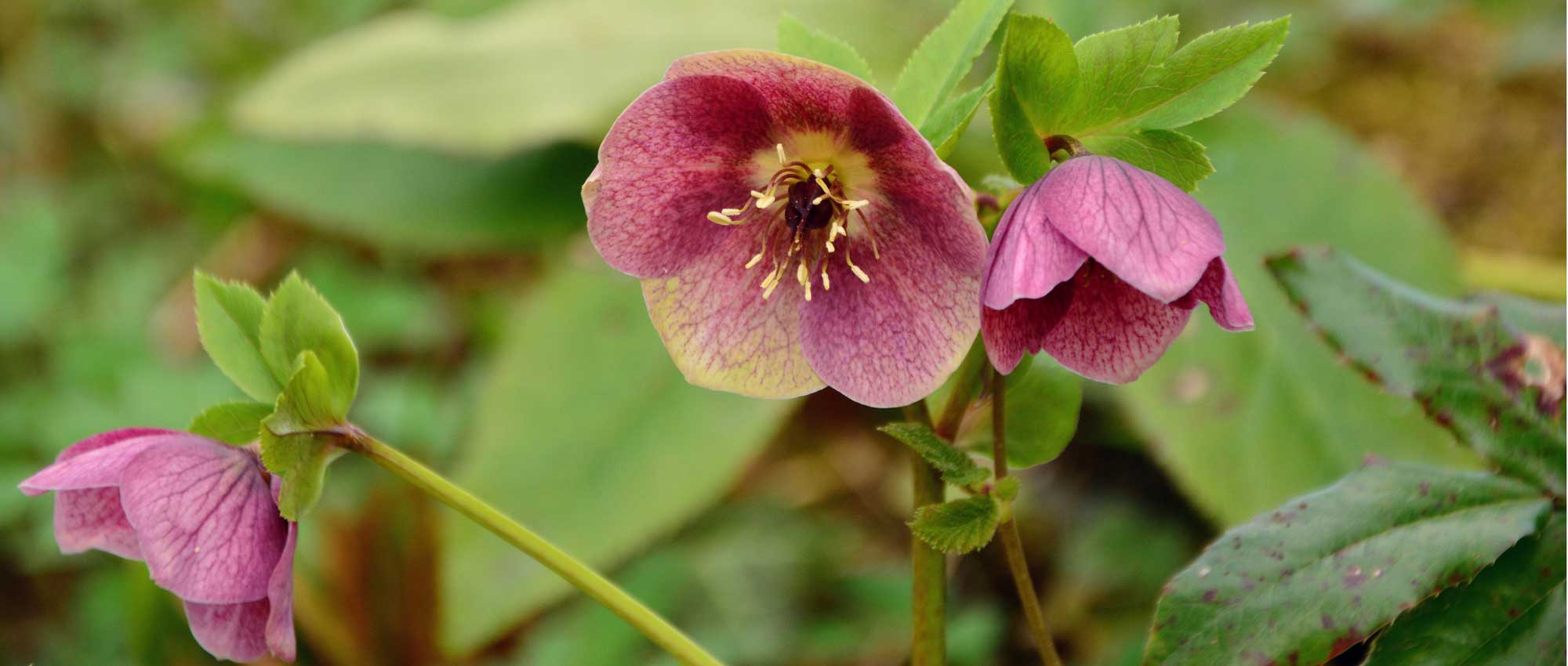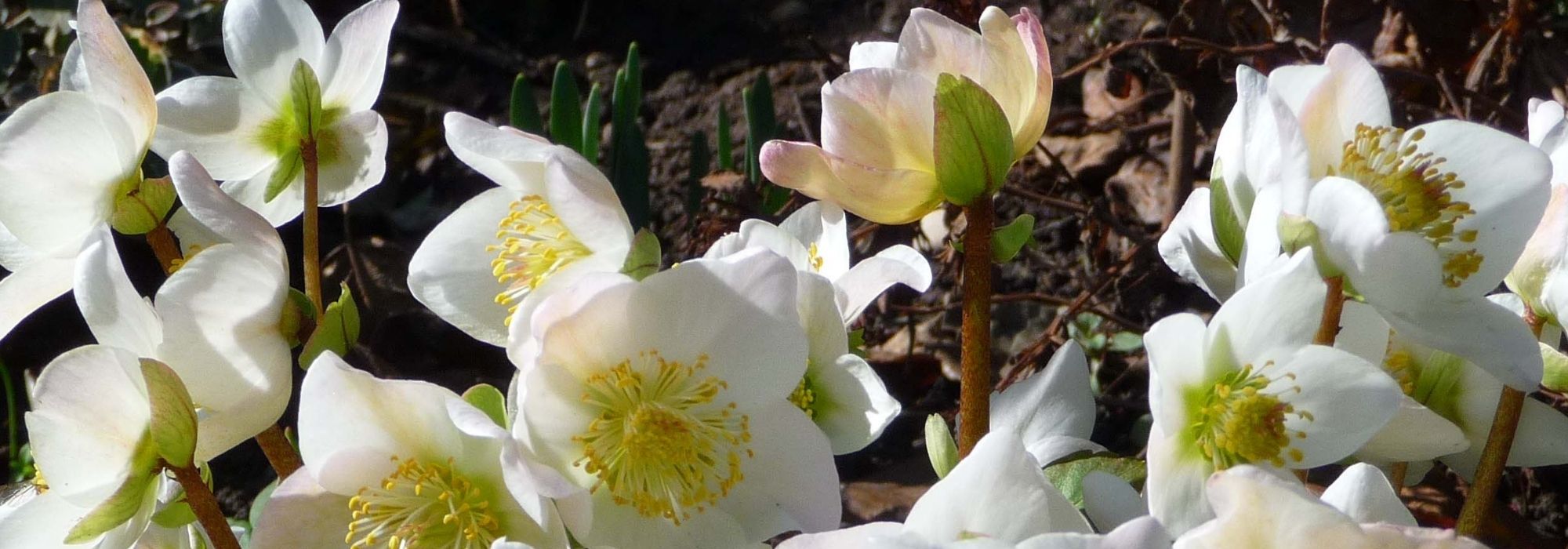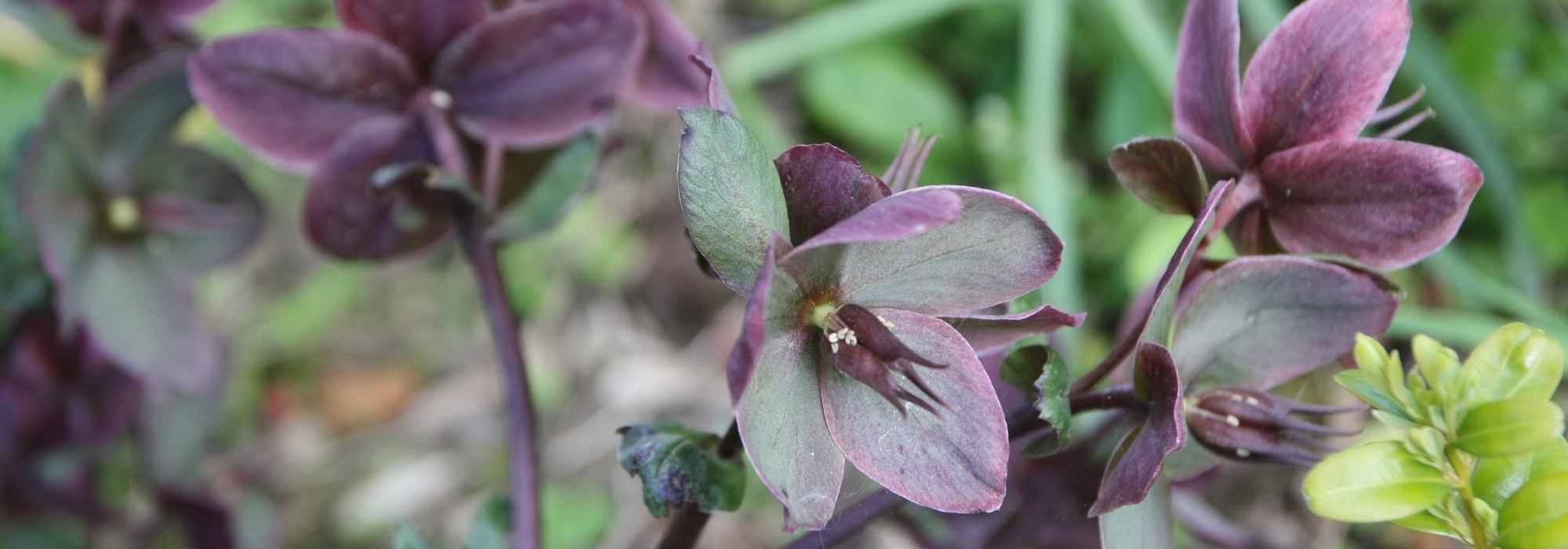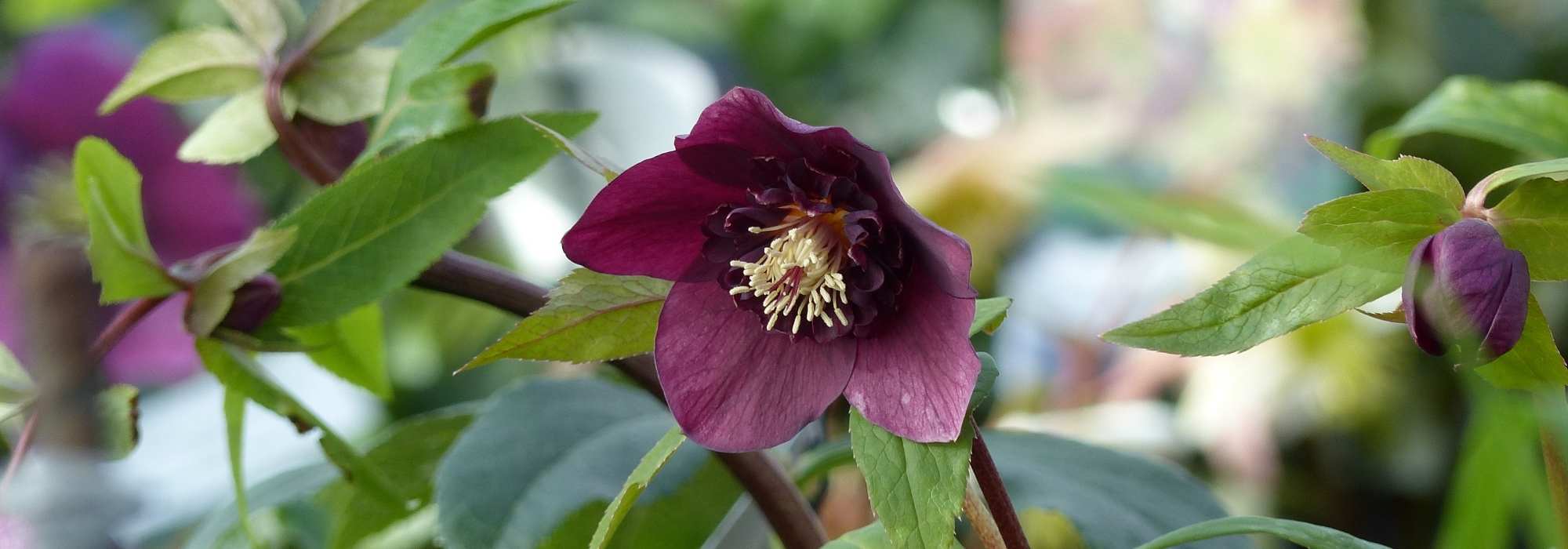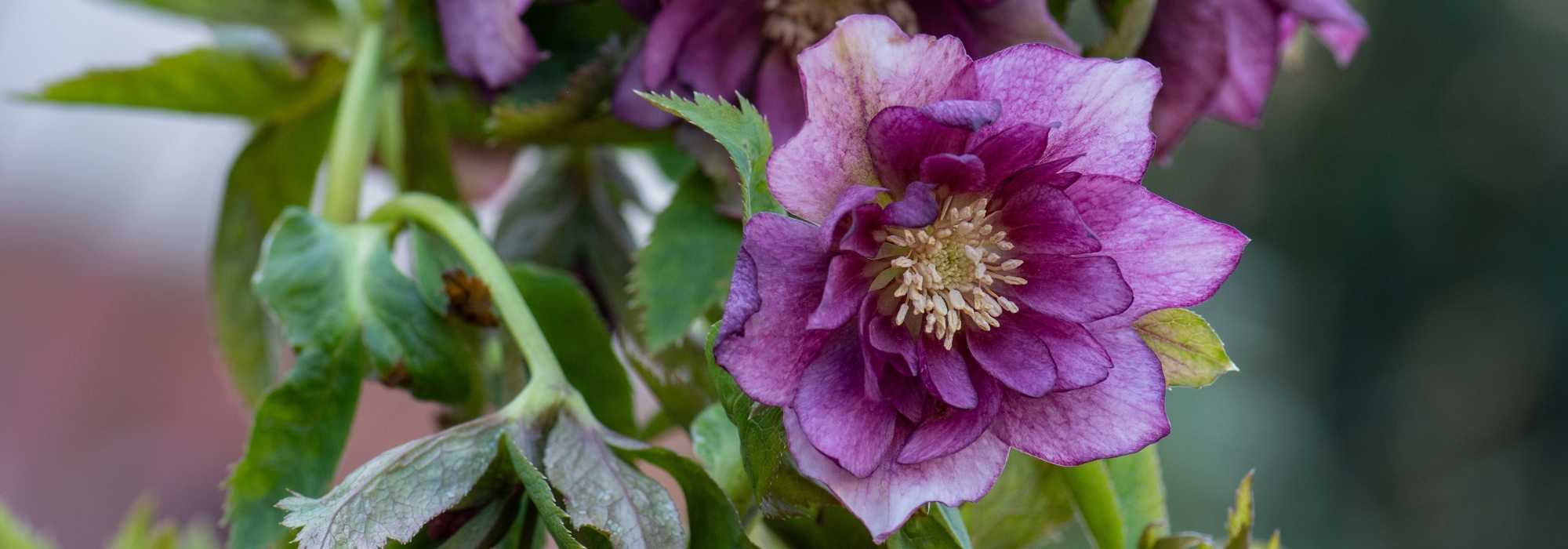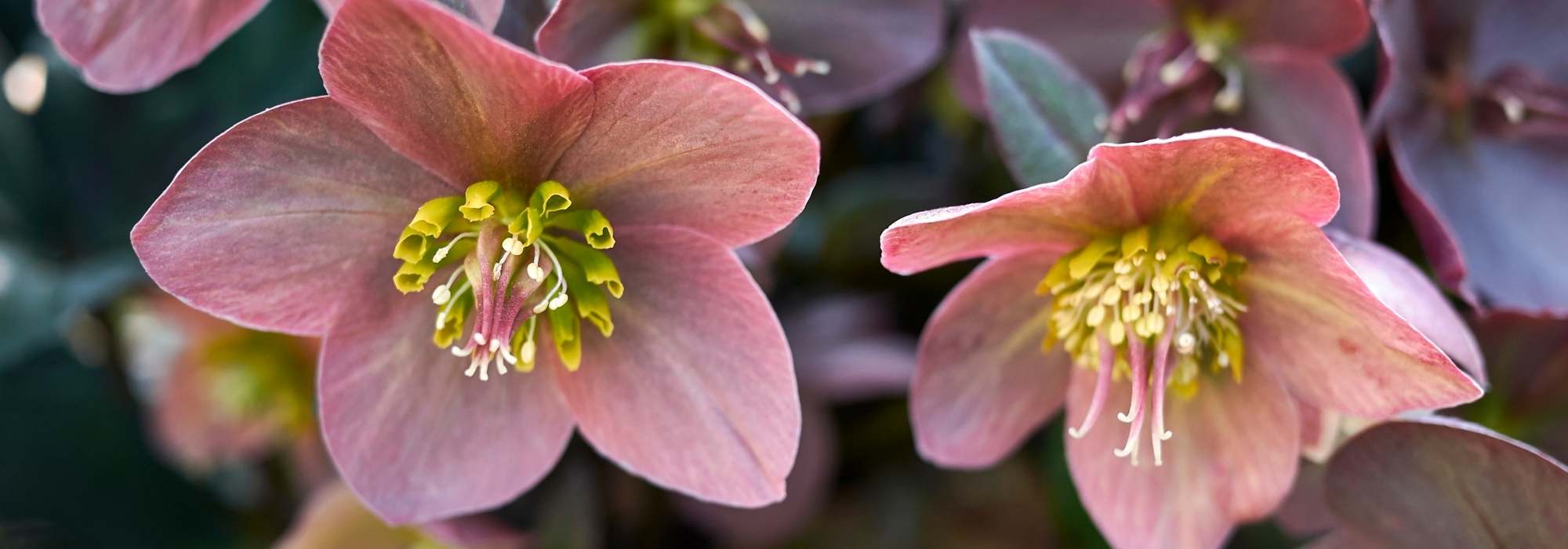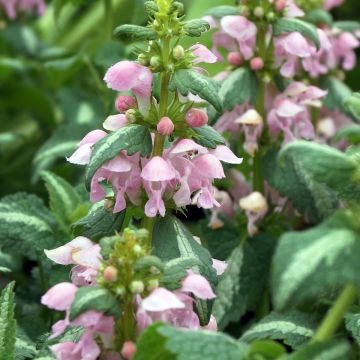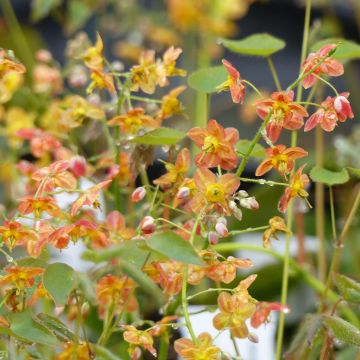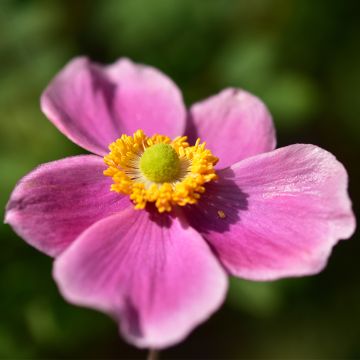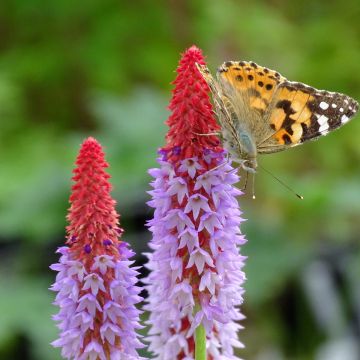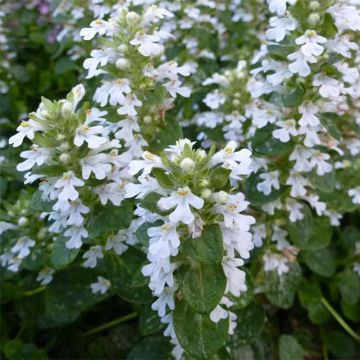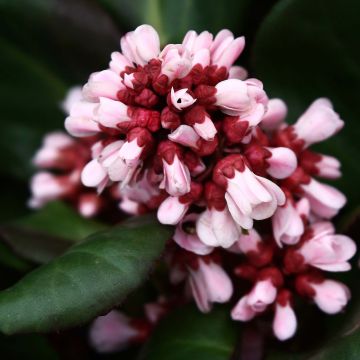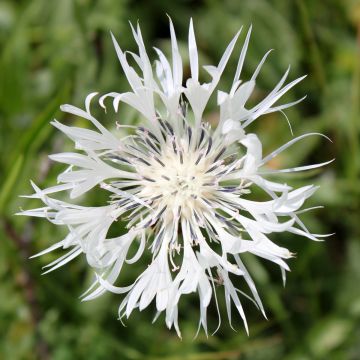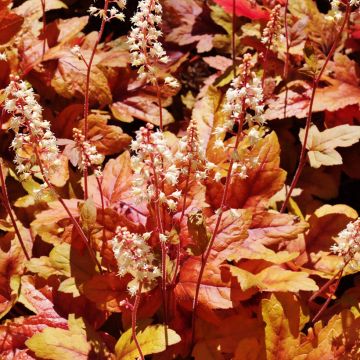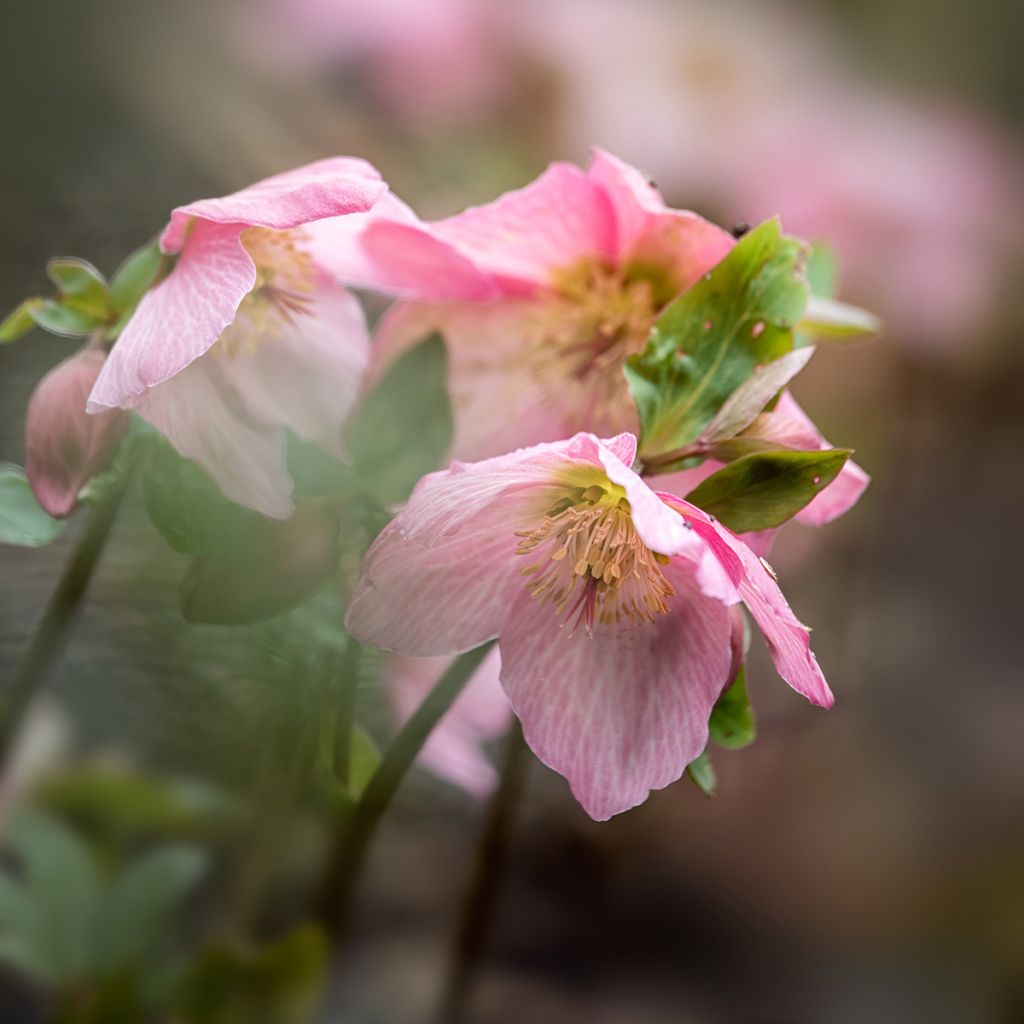

Helleborus Walbertons Rosemary
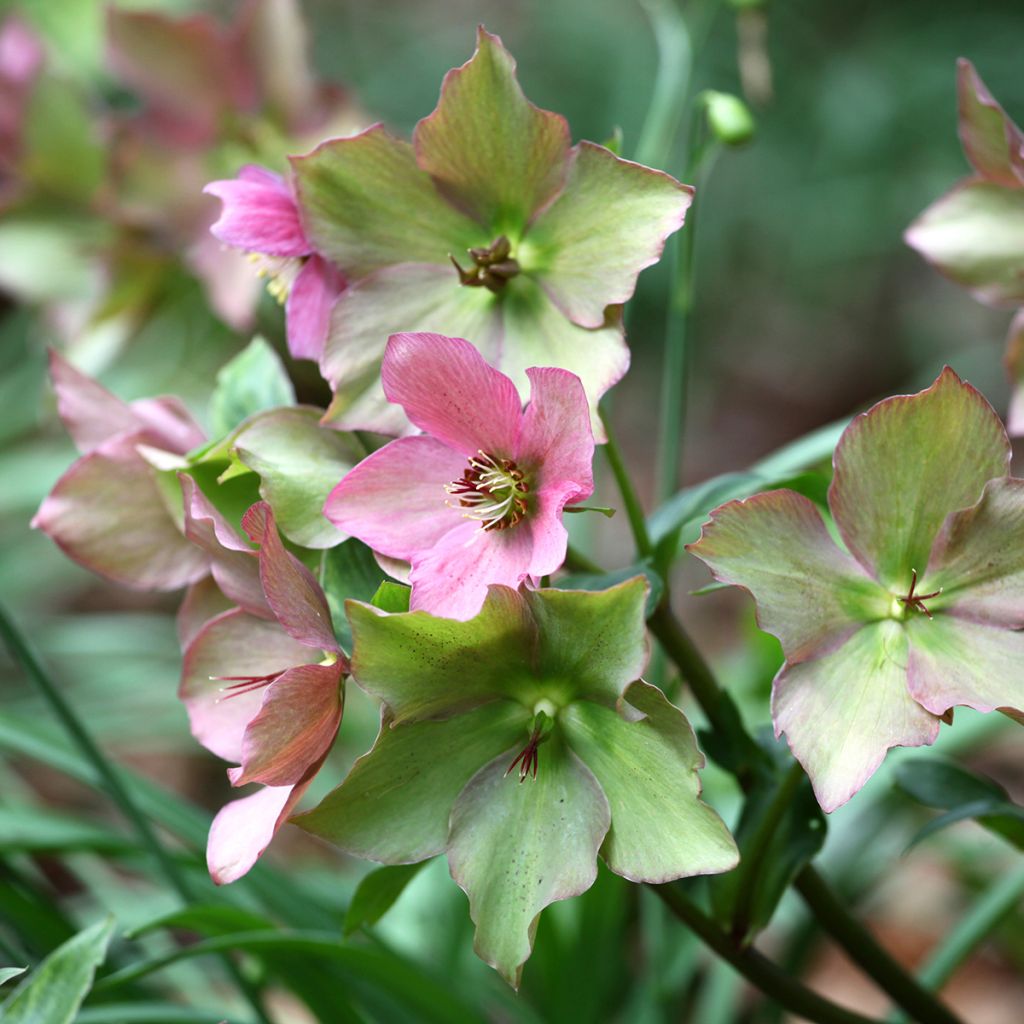

Helleborus Walbertons Rosemary
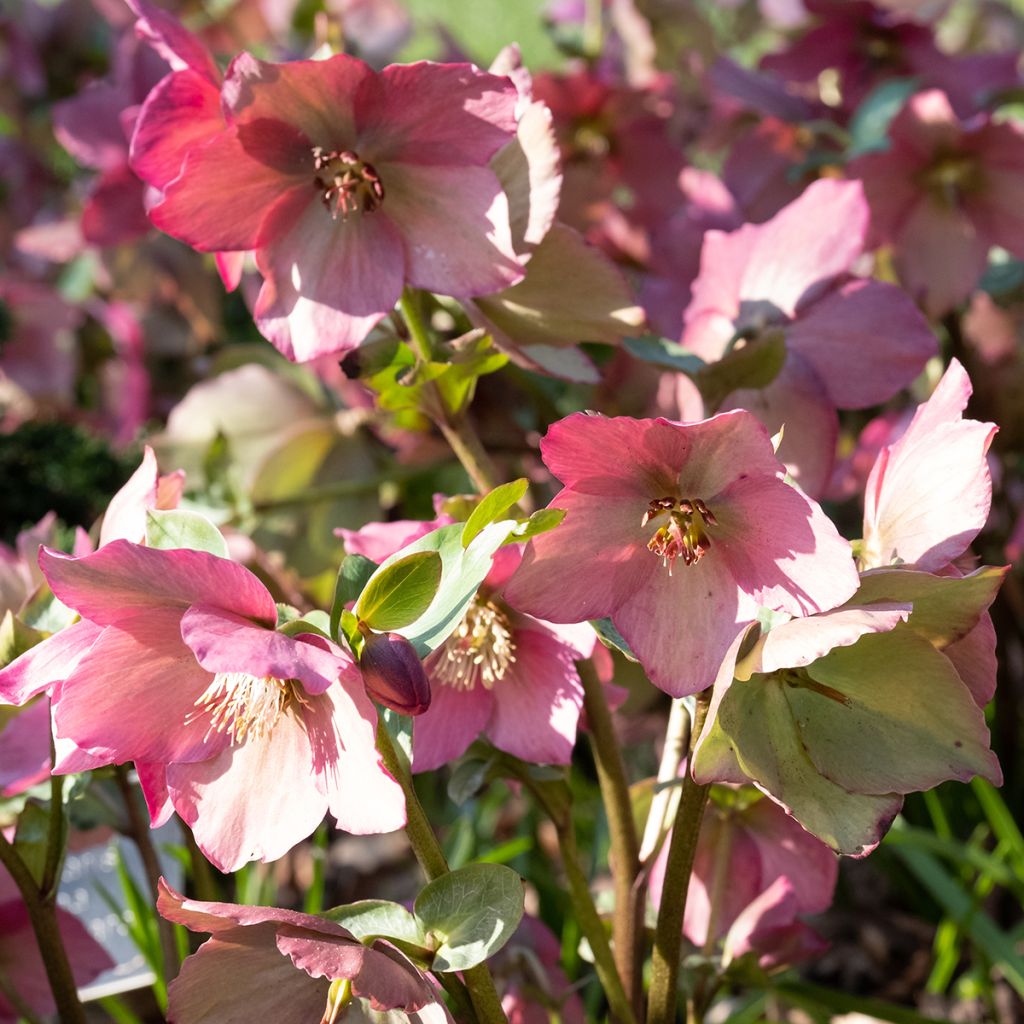

Helleborus Walbertons Rosemary
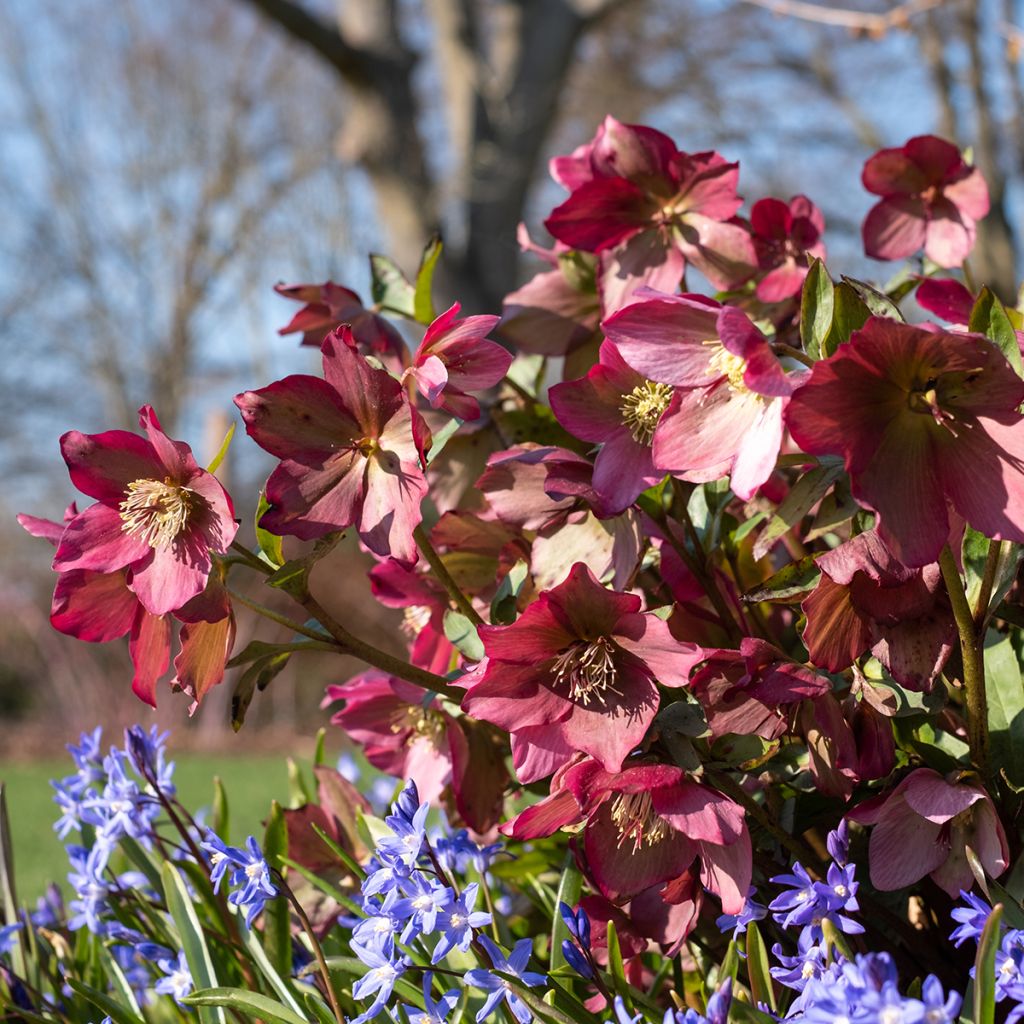

Helleborus Walbertons Rosemary
View more pictures
Hide images
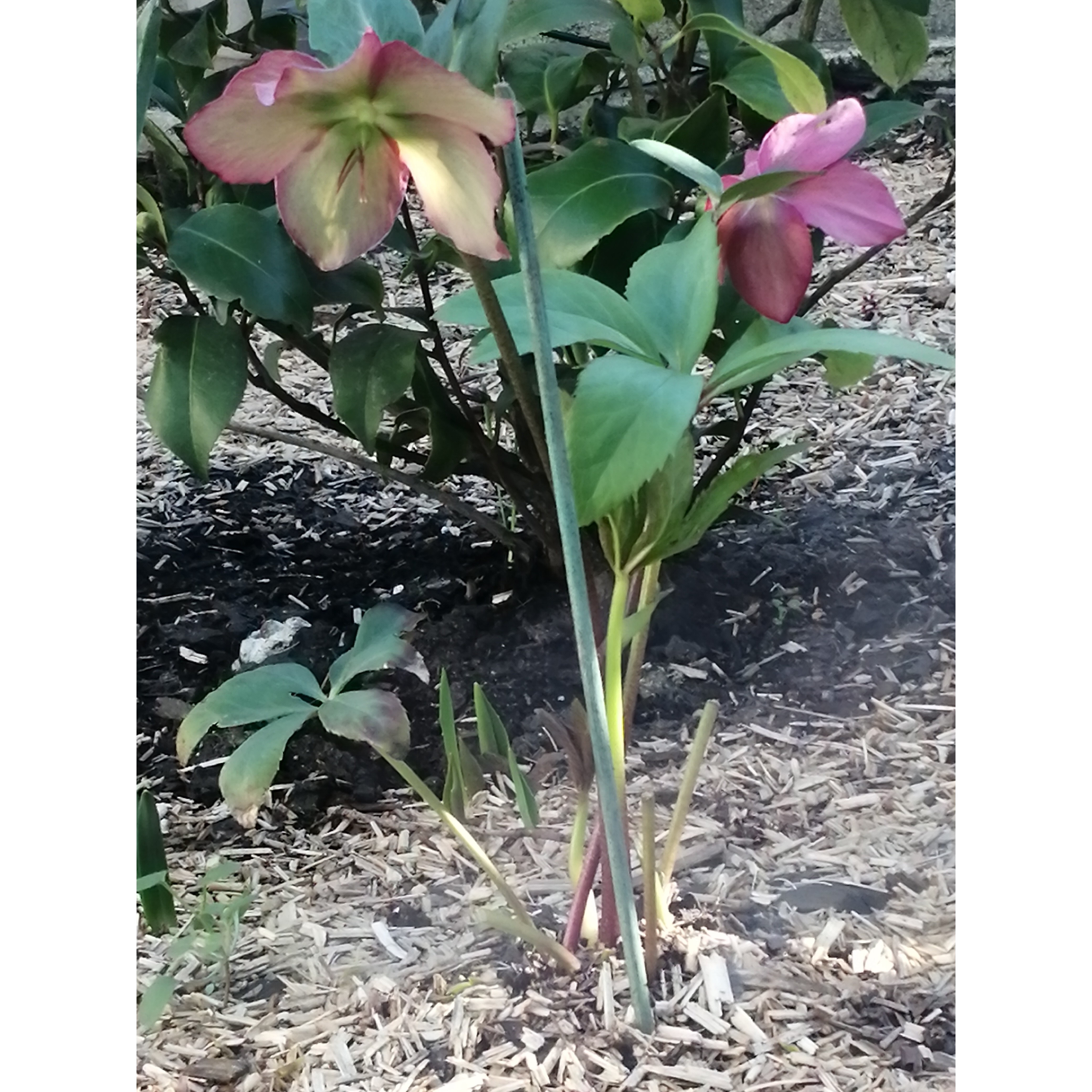
Paola G.

This is a plant that I absolutely adore. It's a real beauty in the garden, especially during the winter months when everything else seems to be sleeping. The delicate pink flowers are simply stunning and bring so much joy to my heart. I highly recommend it
Paola G. • 95 FR
Helleborus Walbertons Rosemary
Helleborus niger x orientalis Walberton's Rosemary (Walhero)
Lenten Rose
I planted this hellebore in the Paris region in September 2022. By the end of December 2023, its buds are just emerging from the ground, so it will truly be in bloom around mid-January. On Instagram, I've seen blooming plants as early as mid-December. Conclusion: planted under normal conditions in open ground, I doubt that this hellebore can flower in November; it is therefore not particularly early. Apart from this caveat, it is a lovely variety.
Jérôme , 27/12/2023
Special offer!
Receive a €20 voucher for any order over €90 (excluding delivery costs, credit notes, and plastic-free options)!
1- Add your favorite plants to your cart.
2- Once you have reached €90, confirm your order (you can even choose the delivery date!).
3- As soon as your order is shipped, you will receive an email containing your voucher code, valid for 3 months (90 days).
Your voucher is unique and can only be used once, for any order with a minimum value of €20, excluding delivery costs.
Can be combined with other current offers, non-divisible and non-refundable.
Why not try an alternative variety in stock?
View all →This plant carries a 12 months recovery warranty
More information
We guarantee the quality of our plants for a full growing cycle, and will replace at our expense any plant that fails to recover under normal climatic and planting conditions.

Would this plant suit my garden?
Set up your Plantfit profile →
Description
The Hellebore or Helleborus Walberton's Rosemary (Walhero) is a wonderful plant born in England from the alliance between the Christmas rose, Helleborus niger, and the Lenten rose, Helleborus orientalis. Combining the qualities of its parents, this excellent novelty offers a fantastic flowering that lasts 5 months, from autumn to spring. Its flowers, well displayed, are stars that gradually change from pink veined with white to salmon tones before slowly turning green. This robust and very hardy perennial can be planted both in borders and under shrub beds, mixed borders, as well as in pots. Its flowers are very beautiful and precious in winter bouquets.
Helleborus Walberton's Rosemary is an evergreen herbaceous perennial plant, belonging to the family of ranunculaceae. Forming a clump 30cm (12in) tall and spreading over 50cm (20in) at minimum, this sterile variety, which does not produce seeds, stands out for the abundance and especially the duration of its continuous flowering, which starts in November and ends in April. Its abundant flowers proudly stand above beautiful glossy foliage, offering their yellow stamens to passers-by. They are composed of 5 petals with irregular edges, tapered to a point, arranged in an open cup. Born from dark pink buds, they bloom in light pink veined with white and speckled with dark pink, then gradually change colour and age beautifully. The foliage is composed of palmate basal leaves, slightly dentate, dark green and shiny. They are evergreen leaves 30 to 40cm (12 to 16in) long, composed of 7 to 9 leaflets. They actually only live for 8 months and are regularly replaced by new leaves. Hellebores do not like to be moved once established, the young shoots taking some time to flower. The seeds are sown by ants.
Use hellebores as elements of an ancient tapestry, mixing them with brightly coloured woodland plants. They are well highlighted when planted near Pieris, small-sized rhododendrons in acidic soil, and under conifers (especially in windy locations). Also mix them with primroses, bleeding hearts, lungworts, foxgloves, or spring-flowering bulbs: crocuses, daffodils, snowdrops... You can also accompany them with ferns and shade irises to create a beautiful contrast a little later in the season. They can also be planted in groups, like a bouquet, near the entrance of the house, in shaded areas, to enjoy their early flowers up close. They are suitable both as cut flowers and in borders, beds, or even containers... Over time, the flowers of the Hellebore do not fade like the majority of other flowers but dry up.
Helleborus Walbertons Rosemary in pictures


Flowering
Foliage
Plant habit
Botanical data
Helleborus
niger x orientalis
Walberton's Rosemary (Walhero)
Ranunculaceae
Lenten Rose
Cultivar or hybrid
Planting and care
The Hellebore grows in any deep, rich, light or clay soil, even on limestone subsoil, in partial or light shade, while being sheltered from cold and prevailing winds. This perennial can be planted from early autumn to spring, between February and April. It thrives in deeply cultivated soil mixed with organic matter. To fertilize, use bonemeal or another organic fertilizer. Water the plants well after planting and then add a layer of mulch 2 to 5cm (1 to 2in) thick. Regularly remove faded leaves to improve flowering. Ensure a planting distance of 30 to 40cm (12 to 16in) between each plant to promote their development. Hellebores do not tolerate stagnant water as it may cause them to rot.
The roots should not dry out completely in summer. Hellebores can be affected by a fungal disease transmitted by aphids, called black spot disease. Remove the old leaves of deciduous species or the stained leaves of evergreen species when the flower buds appear. Remove faded flowers after the seeds have fallen. They can also suffer from grey rot or die from collar rot. This often occurs due to poor growing conditions, in excessively wet situations.
On a balcony or terrace, plant them in pots 4 to 5 times larger than their size, as they need space to develop their root system. Very hardy, most Hellébores can withstand temperatures as low as -15°C without suffering, allowing them to adapt to a wide range of areas. Mostly native to the circum-Mediterranean regions, Hellebores are undemanding plants that can live for many years without requiring much care.
Planting period
Intended location
Care
Planting & care advice
-
, onOrder confirmed
Reply from on Promesse de fleurs
Similar products
Haven't found what you were looking for?
Hardiness is the lowest winter temperature a plant can endure without suffering serious damage or even dying. However, hardiness is affected by location (a sheltered area, such as a patio), protection (winter cover) and soil type (hardiness is improved by well-drained soil).

Photo Sharing Terms & Conditions
In order to encourage gardeners to interact and share their experiences, Promesse de fleurs offers various media enabling content to be uploaded onto its Site - in particular via the ‘Photo sharing’ module.
The User agrees to refrain from:
- Posting any content that is illegal, prejudicial, insulting, racist, inciteful to hatred, revisionist, contrary to public decency, that infringes on privacy or on the privacy rights of third parties, in particular the publicity rights of persons and goods, intellectual property rights, or the right to privacy.
- Submitting content on behalf of a third party;
- Impersonate the identity of a third party and/or publish any personal information about a third party;
In general, the User undertakes to refrain from any unethical behaviour.
All Content (in particular text, comments, files, images, photos, videos, creative works, etc.), which may be subject to property or intellectual property rights, image or other private rights, shall remain the property of the User, subject to the limited rights granted by the terms of the licence granted by Promesse de fleurs as stated below. Users are at liberty to publish or not to publish such Content on the Site, notably via the ‘Photo Sharing’ facility, and accept that this Content shall be made public and freely accessible, notably on the Internet.
Users further acknowledge, undertake to have ,and guarantee that they hold all necessary rights and permissions to publish such material on the Site, in particular with regard to the legislation in force pertaining to any privacy, property, intellectual property, image, or contractual rights, or rights of any other nature. By publishing such Content on the Site, Users acknowledge accepting full liability as publishers of the Content within the meaning of the law, and grant Promesse de fleurs, free of charge, an inclusive, worldwide licence for the said Content for the entire duration of its publication, including all reproduction, representation, up/downloading, displaying, performing, transmission, and storage rights.
Users also grant permission for their name to be linked to the Content and accept that this link may not always be made available.
By engaging in posting material, Users consent to their Content becoming automatically accessible on the Internet, in particular on other sites and/or blogs and/or web pages of the Promesse de fleurs site, including in particular social pages and the Promesse de fleurs catalogue.
Users may secure the removal of entrusted content free of charge by issuing a simple request via our contact form.
The flowering period indicated on our website applies to countries and regions located in USDA zone 8 (France, the United Kingdom, Ireland, the Netherlands, etc.)
It will vary according to where you live:
- In zones 9 to 10 (Italy, Spain, Greece, etc.), flowering will occur about 2 to 4 weeks earlier.
- In zones 6 to 7 (Germany, Poland, Slovenia, and lower mountainous regions), flowering will be delayed by 2 to 3 weeks.
- In zone 5 (Central Europe, Scandinavia), blooming will be delayed by 3 to 5 weeks.
In temperate climates, pruning of spring-flowering shrubs (forsythia, spireas, etc.) should be done just after flowering.
Pruning of summer-flowering shrubs (Indian Lilac, Perovskia, etc.) can be done in winter or spring.
In cold regions as well as with frost-sensitive plants, avoid pruning too early when severe frosts may still occur.
The planting period indicated on our website applies to countries and regions located in USDA zone 8 (France, United Kingdom, Ireland, Netherlands).
It will vary according to where you live:
- In Mediterranean zones (Marseille, Madrid, Milan, etc.), autumn and winter are the best planting periods.
- In continental zones (Strasbourg, Munich, Vienna, etc.), delay planting by 2 to 3 weeks in spring and bring it forward by 2 to 4 weeks in autumn.
- In mountainous regions (the Alps, Pyrenees, Carpathians, etc.), it is best to plant in late spring (May-June) or late summer (August-September).
The harvesting period indicated on our website applies to countries and regions in USDA zone 8 (France, England, Ireland, the Netherlands).
In colder areas (Scandinavia, Poland, Austria...) fruit and vegetable harvests are likely to be delayed by 3-4 weeks.
In warmer areas (Italy, Spain, Greece, etc.), harvesting will probably take place earlier, depending on weather conditions.
The sowing periods indicated on our website apply to countries and regions within USDA Zone 8 (France, UK, Ireland, Netherlands).
In colder areas (Scandinavia, Poland, Austria...), delay any outdoor sowing by 3-4 weeks, or sow under glass.
In warmer climes (Italy, Spain, Greece, etc.), bring outdoor sowing forward by a few weeks.






























